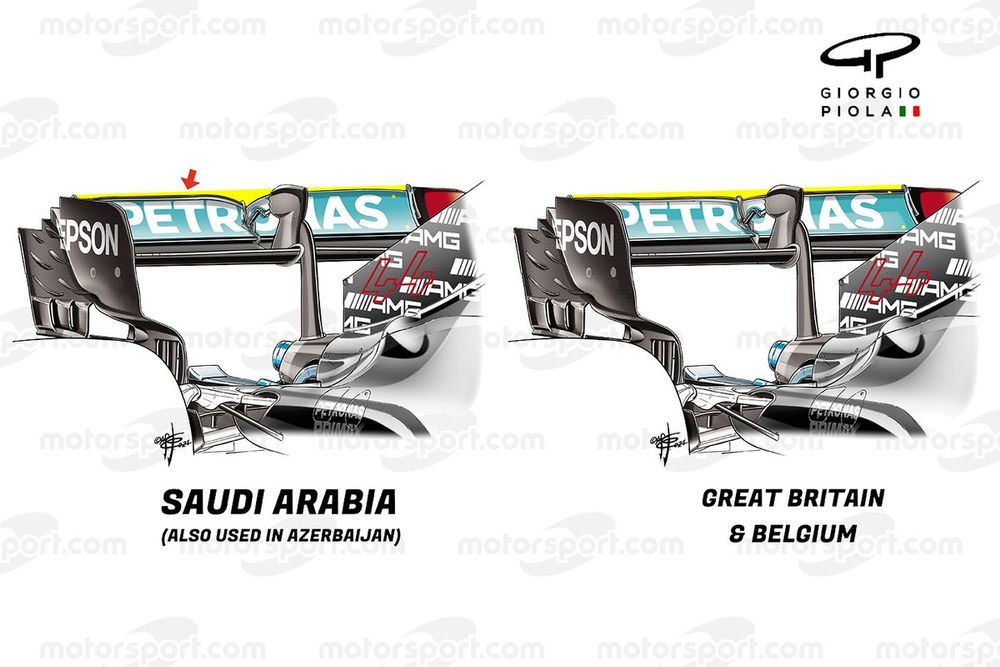The high-speed venue requires a different aerodynamic configuration than last time out in Bahrain, with lower downforce and reduced drag a key aim.
In most instances, the general DNA of the wing’s design is in keeping with what the team used in Bahrain, with a reduction of camber, chord and angle of attack proving to be sufficient alterations to balance each team’s needs.
Mercedes, however, appears to have been a little more aggressive with its rear wing design, having lifted and widened the flatter central portion of the mainplane quite considerably, leading to a more abrupt transition into the endplate.
As a consequence, the transition of the upper flap from the flat leading edge to the DRS pivot and associated bracketry is also more abrupt, resulting in the geometry of the tip section being altered too.
Notably there’s also a large semi-circular notch removed from the central portion of the upper flap’s trailing edge as the team looks for better flow management here, owing to the overall reduction in camber, chord and angle of attack, whilst also considering the impact that the DRS pod has.
Whilst new for Mercedes under these regulations, it’s not a new feature in F1 as Red Bull had continued to use a V-shaped notch with this new generation of cars after it became commonplace in the years prior to the regulation change.
Mercedes W12 rear wing comparison
Photo by: Giorgio Piola
As we can see, Mercedes did use different variations of V-shaped notches on the trailing edge of their rear wings in 2021, with the size dictated by the amount of wing being used at the time.
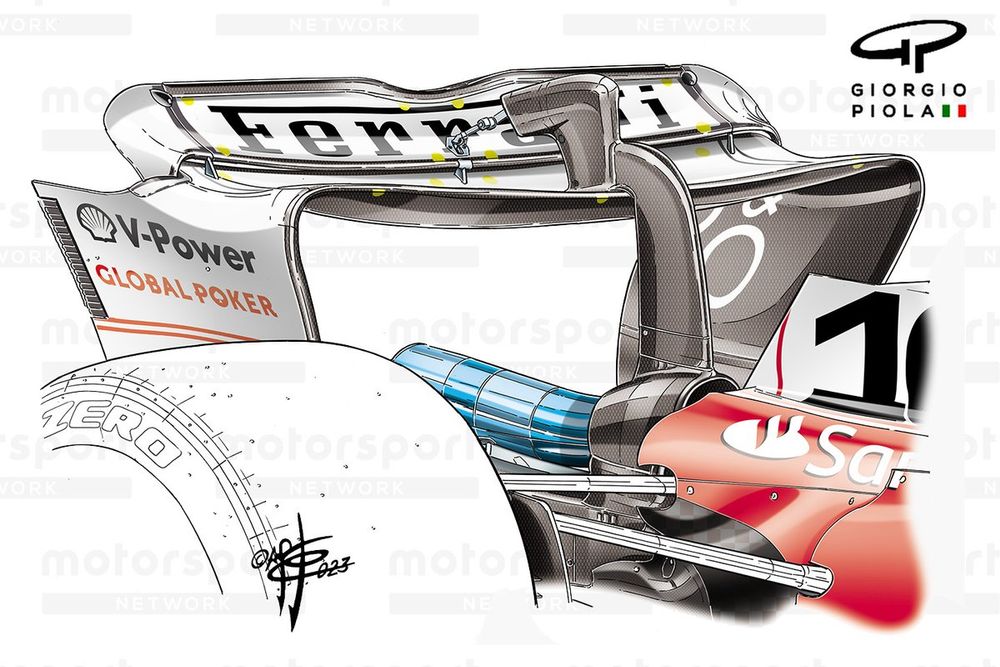
Charles Leclerc, Ferrari SF-23 rear wing detail
Photo by: Giorgio Piola
Ferrari used a similar semi-circular notch at stages during its 2023 campaign, rather than the more widely adopted V-shaped notch, which could have influenced Mercedes’ decision to follow this design approach.
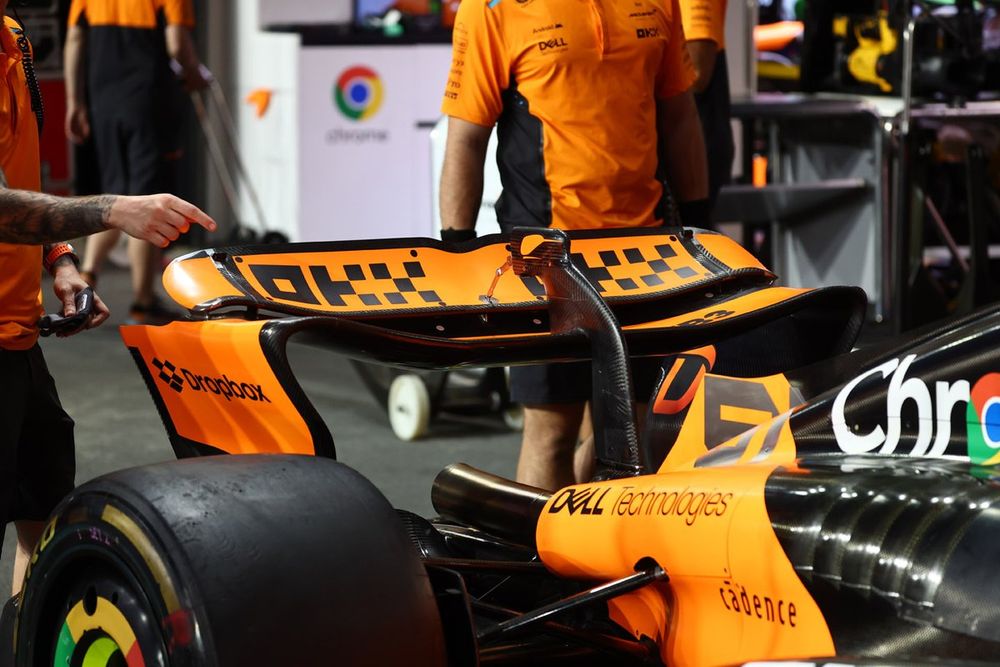
McLaren MCL38 rear wing detail
Photo by: Giorgio Piola
Similar to Mercedes, McLaren has also arrived with a new rear wing layout for Jeddah and it also features a more semi-circular design, rather than a V-shaped layout.
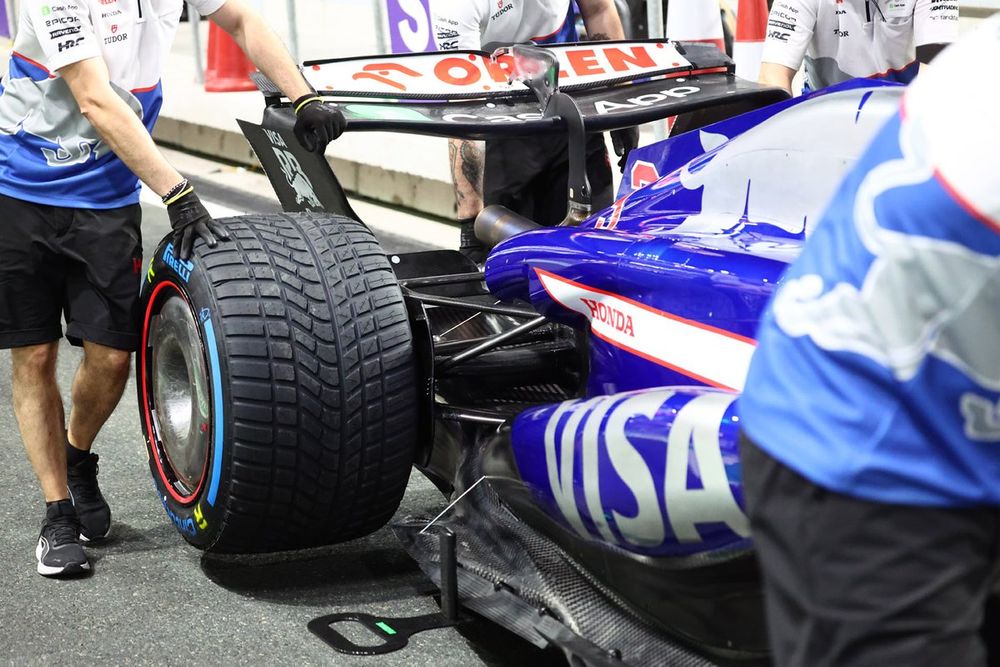
RB F1 Team VCARB 01 rear detail
Photo by: Giorgio Piola
Meanwhile, RB followed its sister team’s approach, albeit with a much smaller V-shaped notch than the one present on the RB20.
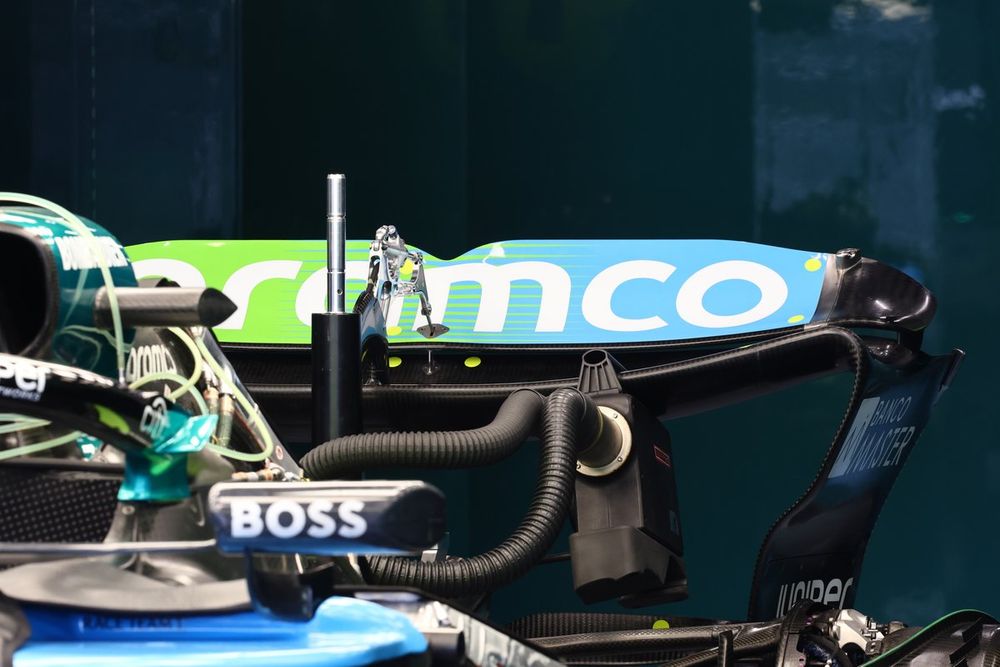
Aston Martin AMR24 rear wing detail
Photo by: Giorgio Piola
Aston Martin has a shapely trailing edge to its rear wing in order to better…
Click Here to Read the Full Original Article at Autosport.com – Formula 1 – Stories…

